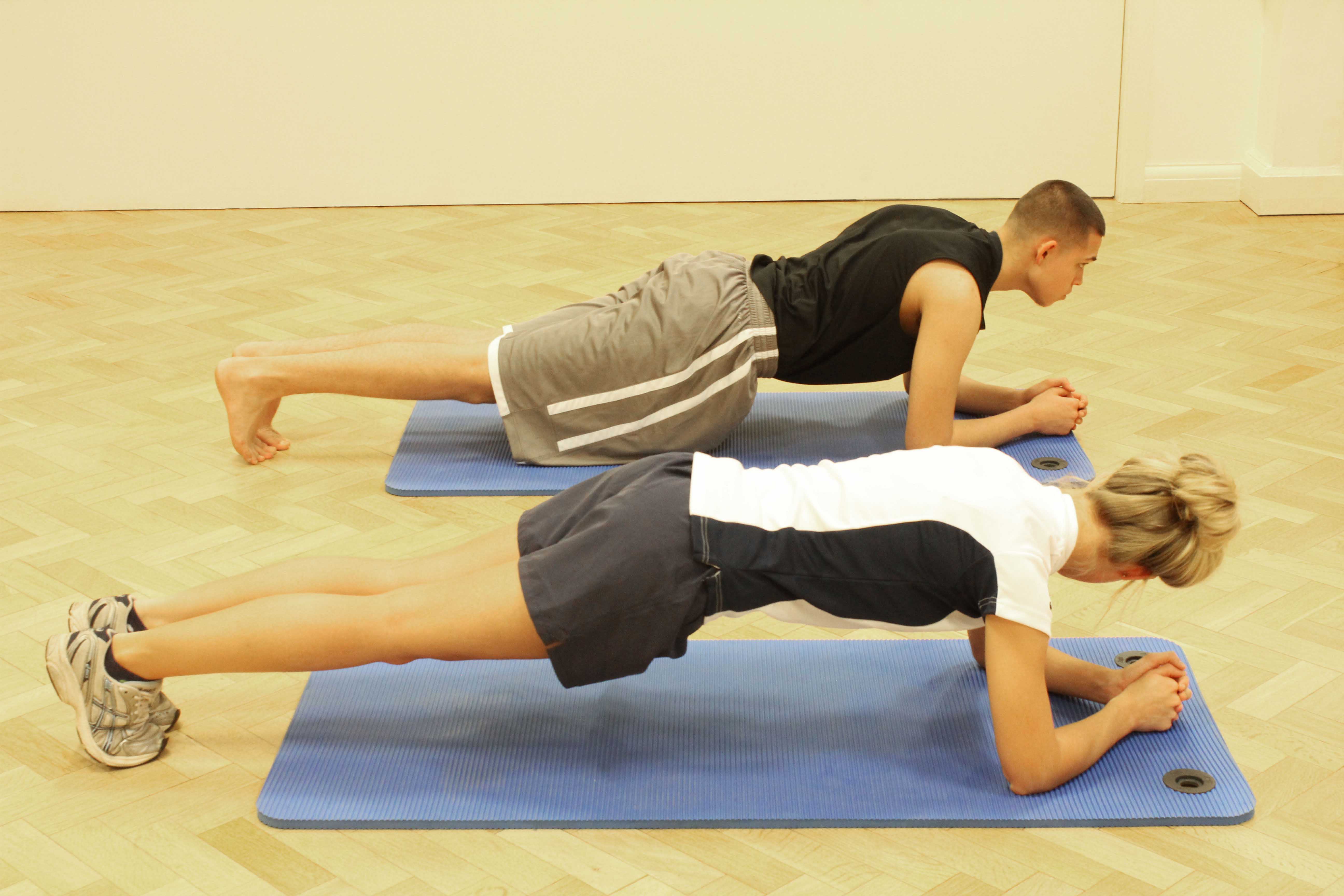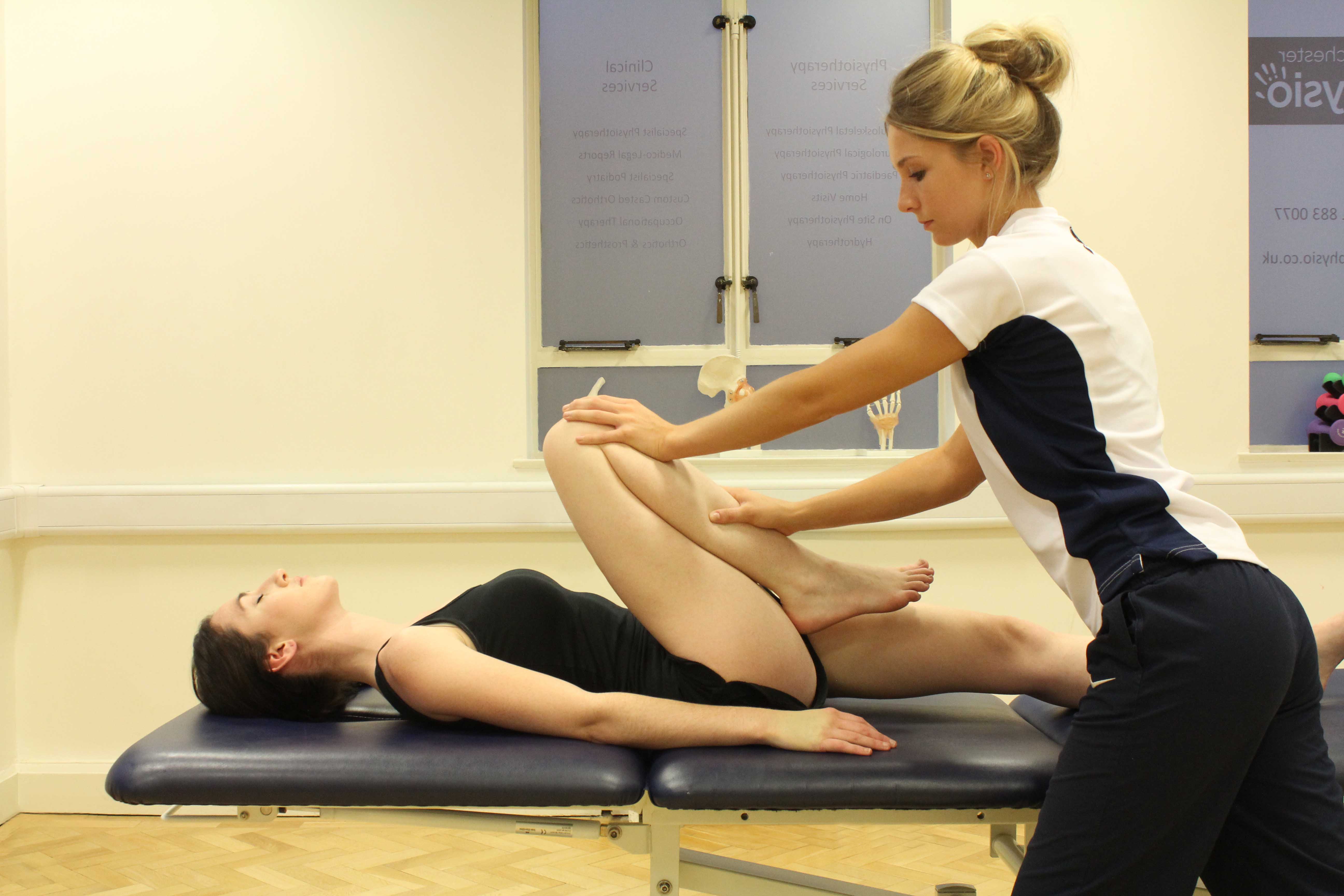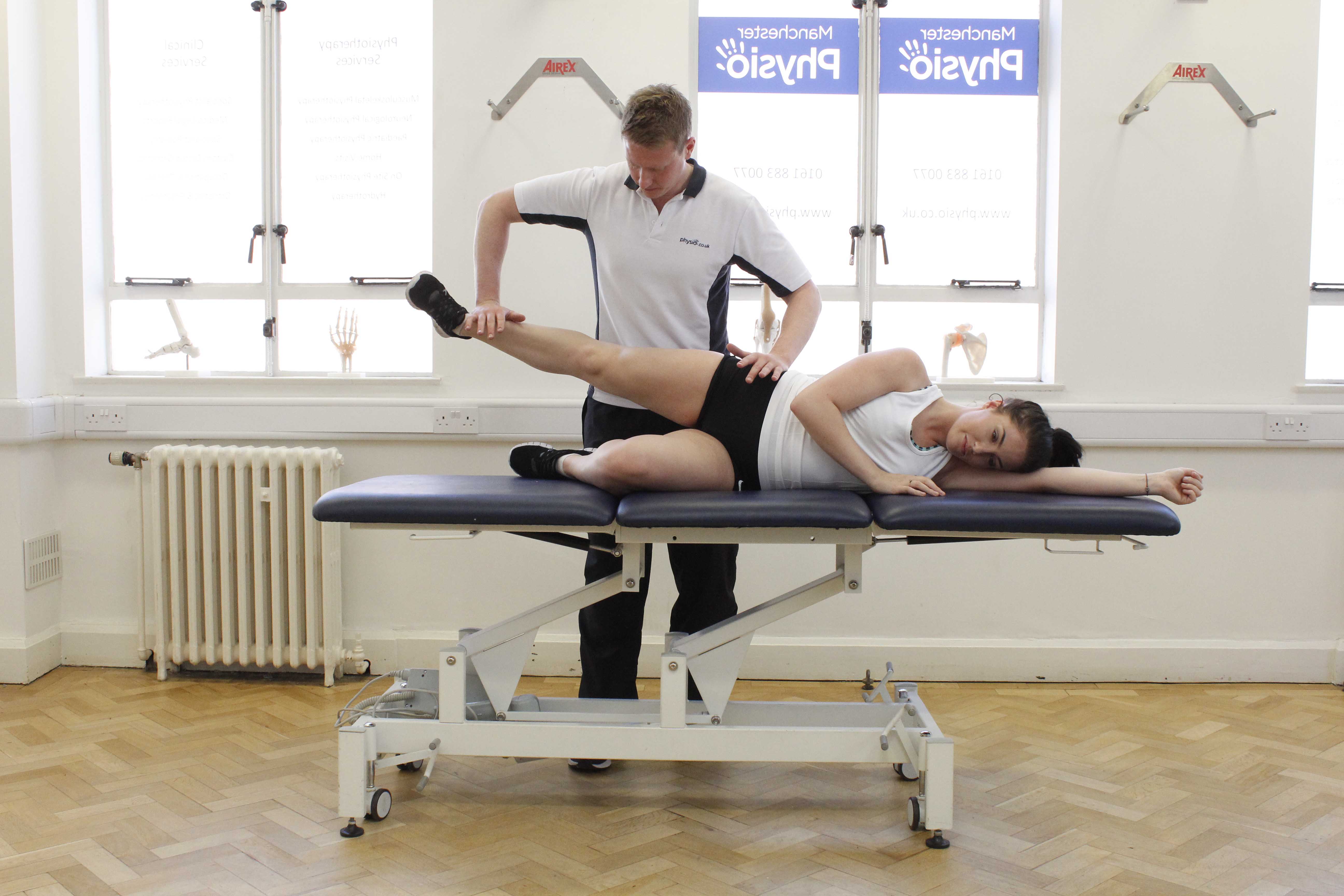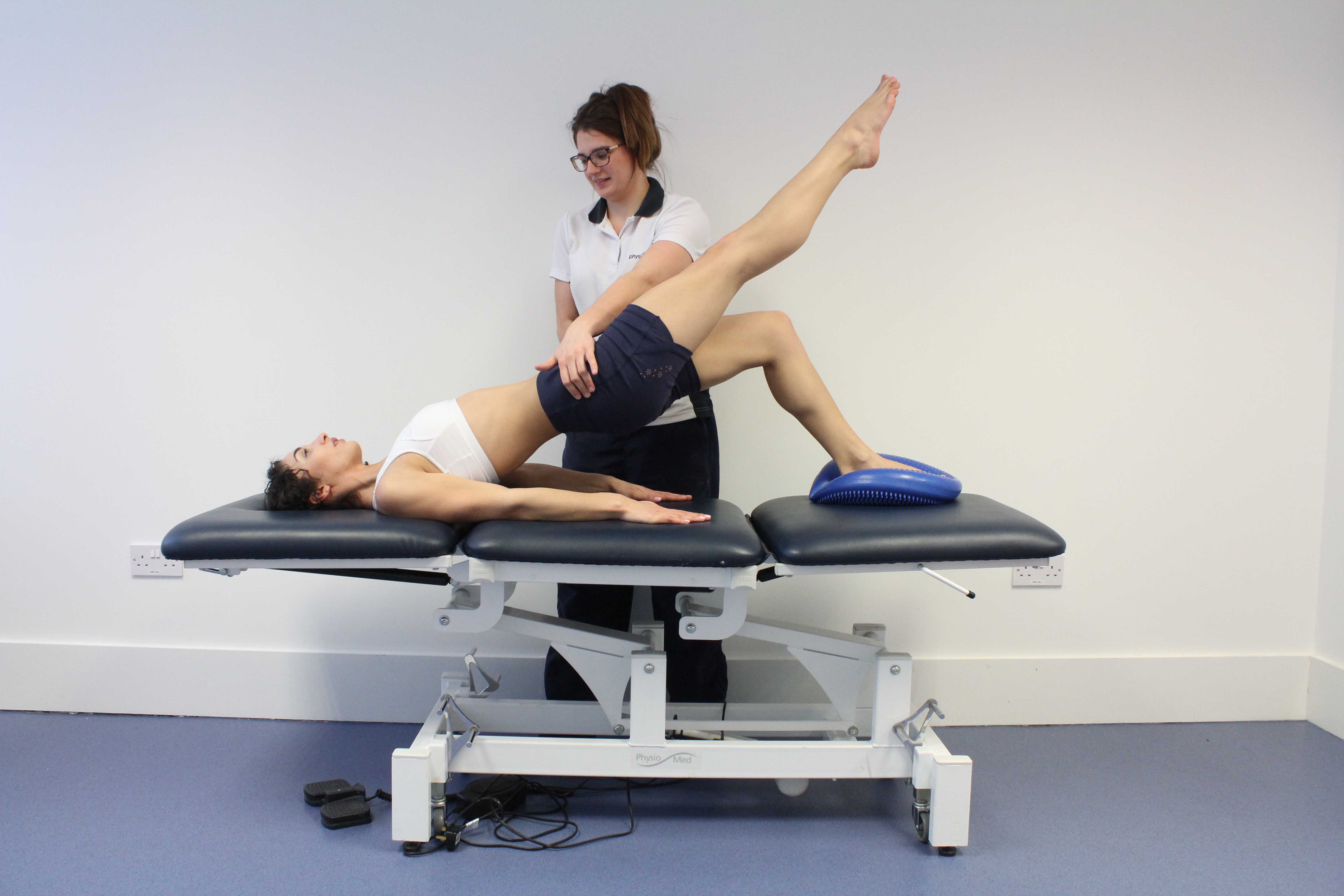What is a hip strain?
There are a number of muscles around the hip joint that are responsible for large movements. These include rectus femurs, iliopsoas and the adductors.When any of the fibres that make up these muscles becomes torn or damaged, this is known as a hip strain. A physiotherapy programme should be followed if a hip strain is incurred.
 Above: Soft tisue massage of the muscles and connective tissues around the hip by specialist therapist
Above: Soft tisue massage of the muscles and connective tissues around the hip by specialist therapistHow does a hip strain occur?
Hip strains are mainly caused by large, powerful movements of the hip including kicking, running and sprinting actions. These all place additional pressure on the muscles of the hip.
There are three grades of hip muscle strain:
- Grade 1: a small number of muscle fibres are damaged
- Grade 2: a larger number of fibres are torn and more pain and bruising will be experienced
- Grade 3: a complete rupture of one or more of the hip muscles
 Above: Passive stretch of the muscles and connective tissues of the hip and pelvis by specialist therapist
Above: Passive stretch of the muscles and connective tissues of the hip and pelvis by specialist therapistWhat are the symptoms of a hip strain?
Pain and bruising are the main symptoms of hip strains. Other symptoms could include:
What should I do if I have a hip strain?
If you notice any of the symptoms of a hip strain, you should have a physiotherapy assessment as soon as possible. You can apply ice wrapped in a damp towel straight away to reduce the swelling and minimise your pain.
 Above: Progressive strengthening hip exercises supervised by experienced therapist
Above: Progressive strengthening hip exercises supervised by experienced therapistPhysiotherapy treatment for a hip strain.
Physiotherapy to treat hip strains include a home exercise programme, hydrotherapy and cryotherapy (ice) techniques. Additional treatments may include:
What shouldn’t I do if I have a hip strain?
If you suspect you may have a hip strain, do not carry on with any activities that make your symptoms worse. This may prolong your recovery and could cause long-term complications.
 Above: Progressive strengthening hip exercises supervised by experienced therapist
Above: Progressive strengthening hip exercises supervised by experienced therapistCould there be any long-term effects from a hip strain?
Low grade hip sprains can be resolved with physiotherapy alone but a serious rupture of the hip muscle may require surgery. Following your operation, you should begin a personalised physiotherapy programme to optimise your recovery.
To arrange a physiotherapy appointment call Physio.co.uk on 0330 088 7800 or book online.

 0330 088 7800
0330 088 7800


































